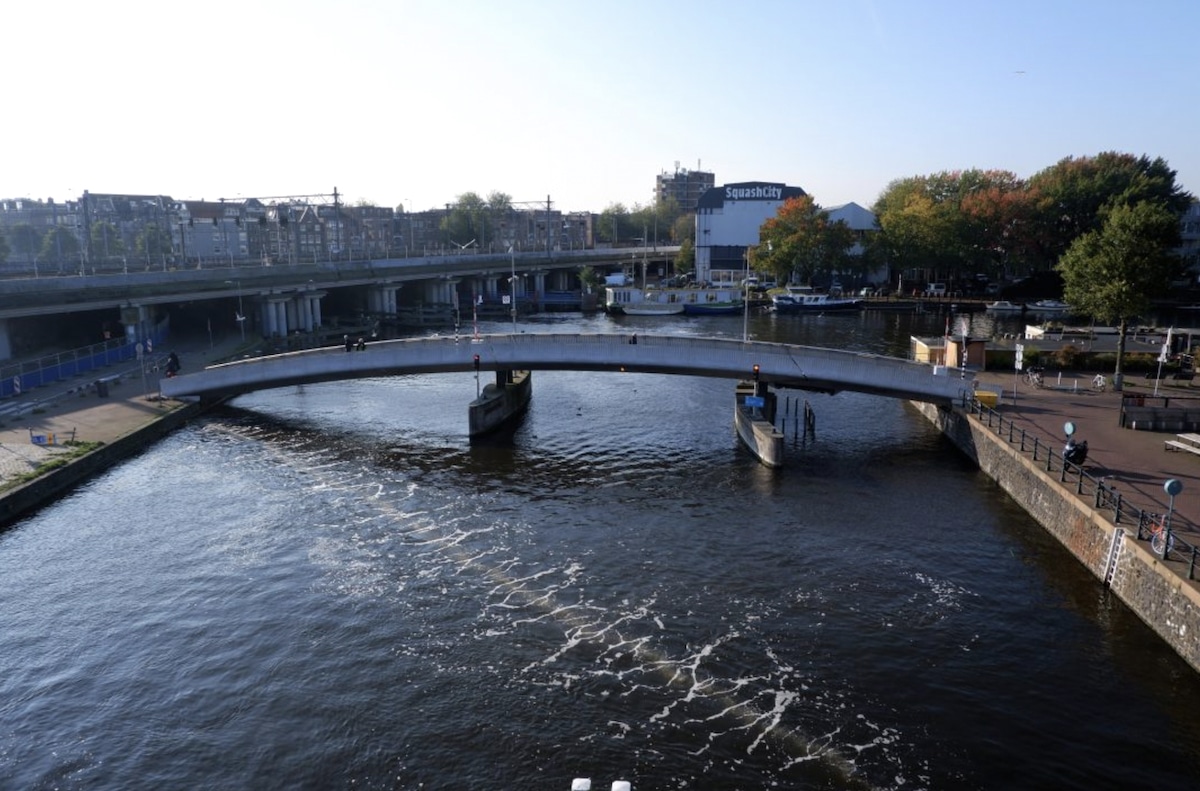Products You May Like
The Great Bubble Barrier was installed to prevent Amsterdam canal plastic from flowing into the North Sea. The Great Bubble Barrier
 Why you can trust us
Why you can trust us
Founded in 2005 as an Ohio-based environmental newspaper, EcoWatch is a digital platform dedicated to publishing quality, science-based content on environmental issues, causes, and solutions.
Plastic pollution has quickly become one of the biggest environmental issues of the 21st century. Plastics that end up in waterways are the cause of millions of animal deaths each year when birds, turtles, fish and other marine organisms ingest or become entangled in plastic waste.
Plastics contain toxic chemicals like PCBs and DDT that can contaminate waterways, and they can absorb and carry harmful pollutants and invasive species from rivers to the ocean. Once plastic is in the ocean, it slowly decomposes, breaking down into tiny microplastics that can enter the marine food chain.
But what if there was a way to prevent plastics from reaching the ocean in the first place?
According to Plastic Smart Cities, more than eight million tons of plastic pollute the world’s oceans each year, and 60 to 80 percent of that comes from rivers.
In order to reduce the amount of plastic that makes its way from rivers to the ocean, co-founder of nonprofit Coast Busters, Claar-els van Delft, developed a new way to stop plastic from migrating that won’t disrupt fish or ship traffic: The Great Bubble Barrier.
Van Delft noticed something five years ago that indicated that the plastic waste washing up on the beach of the seaside town of Katwijk in the Netherlands was coming from a local river, reported The Guardian.
“We started picking up litter and we noticed, near the river entrance, pieces that came from fresh water – all kinds of plastic,” said Van Delft, as The Guardian reported. “Tampon sheaths, brush bristles, but also crisp packages, drink packages, everything.”
Last month, Katwijk became the home of the first river bubble barrier in the world.
According to The Great Bubble Barrier website, the barricade of bubbles comes from air being pumped through perforated tubing that produces a diagonal curtain of bubbles that guides plastics to the surface and then to a catchment system on the side of the waterway.
The team at The Great Bubble Barrier is made up of surfers, sailors and other water lovers who won a Postcode Lottery Green Challenge in 2018 and started their first trial bubble barrier the next year in an Amsterdam canal, reported The Guardian. The success of the pilot led a dozen municipalities, the Rijnland water board, Coast Busters, the Holland Rijnland and Zuid-Holland regions and community fundraisers to put more than $470,000 into the construction of the company’s first river bubble barrier.
“We notice plastic pollution by visitors to the beach, leaving wrappers and other plastic behind, but we are also the last stop before all the plastics collected along the Oude Rijn flow into the sea. With this bubble barrier we can stop those plastics,” said Deputy Mayor of Katwijk Jacco Knape, as The Guardian reported.
Executive board member of the Rijnland water board Bas Knapp, who is investing in the operations of the bubble barrier, does not believe the barrier will interfere with fish migration.
Knapp said they expected the bubble barrier to remove from 86 to 90 percent of the plastic pollution in the river.
In a test in Amsterdam using tangerines released into the water, on the catchment side of the barrier the capture rate was as high as 90 percent, but on the other side it was much lower, likely due to lesser bubble intensity, said environmental hydrodynamics researcher Dr. Frans Buschman, as reported by The Guardian.
Buschman went on to say that floating objects also had the potential to be blown over the barrier, but that the technique still had “great potential.”
Other Great Bubble Barrier projects are being discussed in Portugal and Southeast Asia.
With the variety of types of waterways worldwide, strategies to deal with plastic pollution like The Great Bubble Barrier will work better in some scenarios and not others, said assistant professor at Wageningen University’s hydrology and quantitative water management group Tim van Emmerik, The Guardian reported.
“Of course, consuming and polluting less plastics will help no matter where you go, and may in fact have the greatest impact,” Van Emmerik said.
Subscribe to get exclusive updates in our daily newsletter!
By signing up, you agree to the Terms of Use and Privacy Policy & to receive electronic communications from EcoWatch Media Group, which may include marketing promotions, advertisements and sponsored content.
